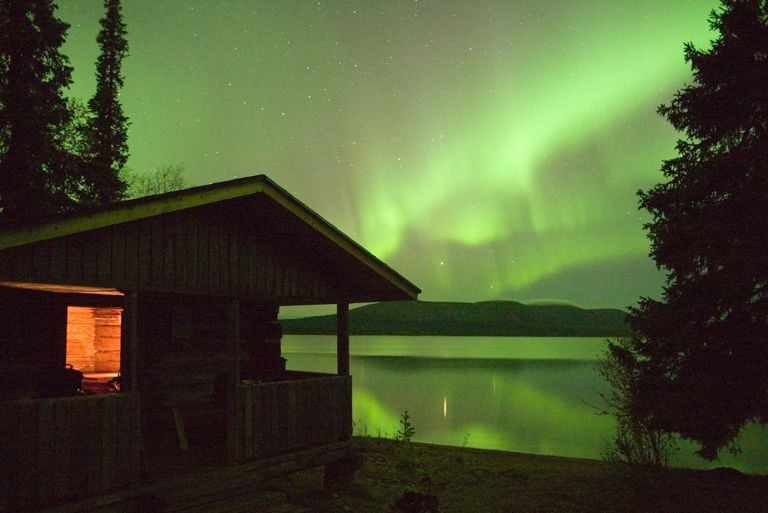Finnish Lapland, located on the edge of the Arctic Circle, offers a striking winter landscape characterized by snow-covered pine trees with bulbous, teardrop-like shapes. The region is accessible via a mid-January train ride from Helsinki, with Kolari serving as Finland’s northernmost railway station.
Lapland thrives thanks to Finland’s robust infrastructure, including reliable Wi-Fi and strong social programs. The economy is driven by adventure tourism, ski resorts, fishing, agriculture, and reindeer farming. Despite temperatures plummeting to –50ºC and snowfall reaching 90 centimeters in remote areas, daily life continues smoothly. Residents of all ages use ski paths that run parallel to roads, often traveling on kicksleds—seated contraptions atop ski rails—to reach school, shops, or coffee stores for a slice of mustikkapiirakka (bilberry pie). Life in Lapland is deeply tied to the natural surroundings, fostering a close connection between people, wildlife, and the changing seasons.

Accommodations near Pallas-Yllästunturi National Park provide the perfect setting for exploring the Arctic elements. Family-run hotels and hostels feature Scandinavian design and offer traditional nightly saunas, reinforcing the region’s cultural heritage. For those unaccustomed to extreme winter conditions, this experience introduces life in the far north.
Dog sledding remains a hallmark of Lapland’s adventure tourism. Unlike passive tours, this activity requires participants to steer their own sleds. Trainers provide instructions on braking and maneuvering, showcasing the strength and agility of the huskies. As the sleds race across the snow-covered terrain, the low-hanging winter sun casts an orange glow over the treetops, enhancing the dramatic scenery.

A traditional Finnish outdoor gathering follows, with participants roasting reindeer sausages over an open fire and sipping hot berry juice. Conversations center around the challenges and rewards of Arctic life, where resilience and flexibility take precedence over superficial concerns.
Sammun Tupa, a 158-year-old reindeer farm, offers further insight into Lapland’s history. The region’s reindeer population, estimated at 200,000, outnumbers the human population. However, none of these animals are truly wild; each belongs to a specific herder and can be identified by ear markings. Reindeer instinctively follow the same migration routes for generations, making them relatively easy to locate when needed.

Traditional Sámi transportation methods are also demonstrated at the farm. Visitors ride in wooden sleds, pulled by reindeer through the snow-covered forests. The journey is accompanied by the rhythmic crunch of hooves and plumes of warm breath, as ice crystals sparkle in the frigid air. Even in one of the world’s most remote corners, there remains a strong sense of connection—to nature, to animals, and to the Arctic way of life.
The aurora borealis provides a breathtaking finale to the Lapland experience. Using the My Aurora app to track activity, visitors wait for the perfect moment to witness the phenomenon. In the early hours of the morning, luminous green ribbons streak across the starry sky, creating an awe-inspiring display.

Lapland remains a destination where nature dictates the rhythm of daily life. The region’s isolation is balanced by its deep connection to the elements, reinforcing the idea that true adventure is found in the harmony between humans and the wilderness.
